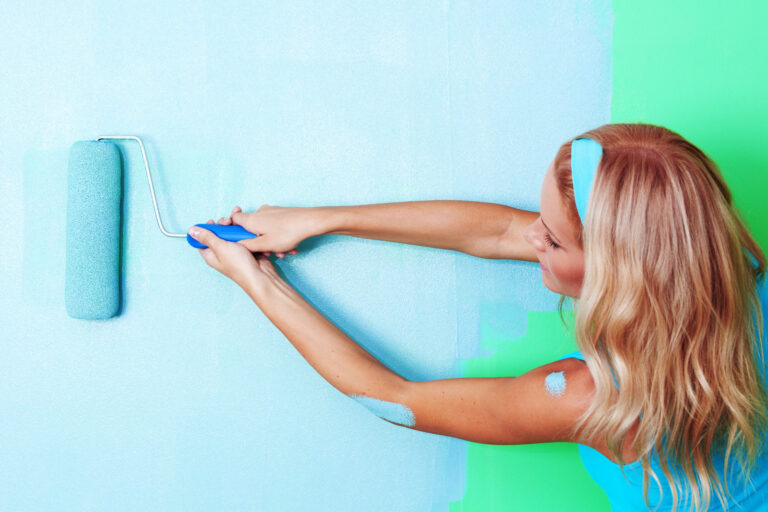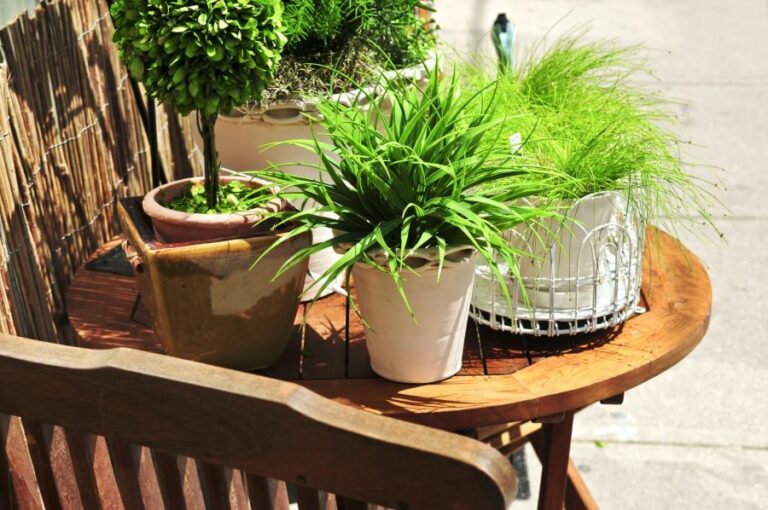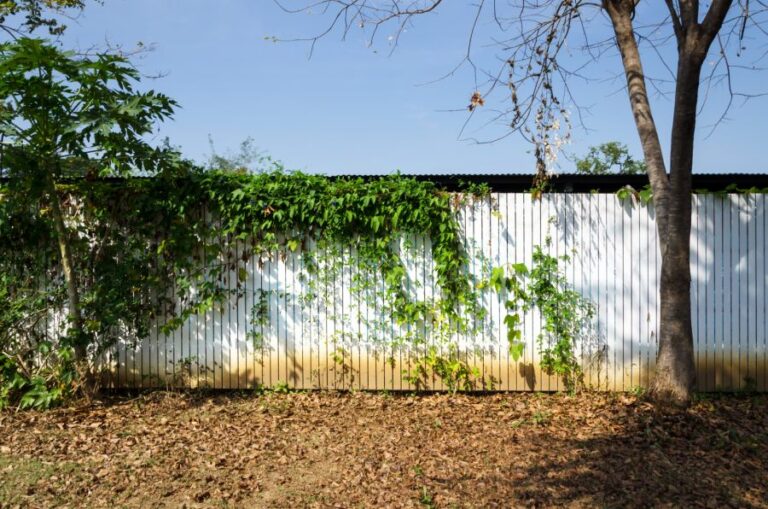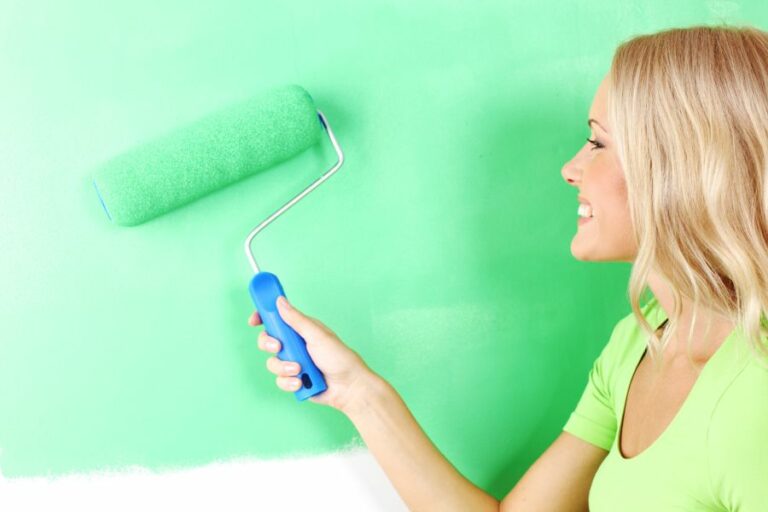What Type Of Paint For Outdoor Wood. What Pros Say
Choosing the right type of paint for outdoor wood is essential in ensuring both durability and aesthetic appeal. Our extensive knowledge of outdoor paints will assist you in making a well-informed decision for your project. Worry not, as we have comprehensive insights on various paint types suitable for exterior wood surfaces, offering you peace of mind while you bring your vision to life.
What type of paint for outdoor wood:
For outdoor wood surfaces, consider acrylic latex, oil-based, or acrylic urethane paint for durability and weather resistance. Acrylic latex offers excellent adhesion and is environmentally friendly, while oil-based paint provides superior protection against moisture and UV rays. Acrylic urethane combines the benefits of both types. Specialty paints like marine or deck paint may be suitable for specific applications.

Discover the perfect paint type for your outdoor wood projects, ensuring long-lasting protection and vibrant color. We’ll discuss various options suited to different requirements and conditions. Read on to learn how to select the best paint to make your outdoor masterpiece come to life!
Contents
- 1 Appropriate Paint Selection for Exterior Wooden Surfaces
- 2 Which Type of Paint is Most Suitable for Outdoor Wooden Surfaces?
- 3 Is it Possible to Use Any Type of Paint on Outdoor Wood Surfaces?
- 4 What Type of Paint is Suitable for Exterior Surfaces?
- 5 What is the Process for Painting Exterior Wood Surfaces?
Appropriate Paint Selection for Exterior Wooden Surfaces
As a professional painter and decorator, I’ve worked on numerous outdoor wood projects, and selecting the right paint is crucial for both aesthetics and durability.
• The Best Types of Paint for Outdoor Wood
– Acrylic Latex Paint
Acrylic latex paint is a popular choice for outdoor wood surfaces due to its excellent adhesion, durability, and ease of application. This type of paint is water-based, which makes it easy to clean up and less harmful to the environment than oil-based paints.
Also, acrylic latex paint dries quickly, reducing the risk of dust and debris getting trapped in the paint as it dries. It is an ideal choice for projects exposed to varying weather conditions, such as exterior siding, decks, and fences.
Recommended brand: Behr Premium Plus Exterior
– Oil-Based Paint
Oil-based paint, also known as alkyd paint, has been a go-to choice for outdoor wood projects due to its superior durability and longevity. Oil-based paint is known for its ability to penetrate wood fibers, providing excellent protection against moisture, UV rays, and other environmental factors.
However, oil-based paint is usually more challenging to apply than acrylic latex paint and takes longer to dry. Additionally, it may require the use of harsh chemicals for cleanup, and it releases higher levels of volatile organic compounds (VOCs) during the drying process.
Recommended brand: Benjamin Moore Impervex Latex High-Gloss
– Acrylic Urethane Paint
Acrylic urethane paint is another excellent option for outdoor wood surfaces. This type of paint combines the best features of acrylic latex and oil-based paints, providing excellent durability, adhesion, and weather resistance.
Acrylic urethane paint is ideal for high-traffic outdoor wood surfaces, such as doors, window frames, and porch railings. Keep in mind that acrylic urethane paint may take longer to dry than acrylic latex paint and can be more challenging to apply.
Recommended brand: Sherwin-Williams Emerald Exterior Acrylic Latex
– Specialty Paints
In addition to the above standard options, there are specialty paints designed for specific outdoor wood applications, such as marine paint for boats and docks and deck paint for wooden decks.
These paints often have additional properties, such as UV resistance, non-slip coatings, and even bacterial/mold resistance.
Recommended brand: Rust-Oleum Marine Topside Paint
• Selecting the Right Paint for Your Outdoor Wood Project
When choosing the best type of paint for your outdoor wood project, consider the following factors:
- Durability and Weather Resistance: Ensure the paint you select can withstand the specific weather conditions in your area, such as intense sun, humidity, rain, or snow.
- Ease of Application: Some paints may require more skill and time to apply, so consider your level of painting expertise.
- Environmental Impact: Choose a paint with low VOC content and easy cleanup if you are concerned about the environmental impact of your project.
- Aesthetics: Lastly, consider the desired appearance, color, and sheen of your paint when making your choice.
• Tips for Preparing and Painting Outdoor Wood Surfaces
Proper surface preparation and application are crucial when painting outdoor wood to ensure the best possible results. Follow these tips for a successful project:
- Clean the Surface: Start by cleaning the wood surface to remove dirt, mildew, and debris. This can be done with a mild soap solution, a brush, and a garden hose or by using a pressure washer.
- Inspect for Damage: After the surface is clean, inspect for any damaged or rotting wood that needs to be repaired or replaced.
- Sand and Prime: Sand the surface to remove any old paint or rough spots, and then apply a suitable primer to ensure proper adhesion of your chosen paint.
- Apply the Paint: Following the manufacturer’s guidelines for application, apply your chosen paint type in thin, even coats, allowing each coat to dry before applying additional coats.
- Seal and Protect: Consider applying a sealant or protective coating over your paint, depending on the specific needs of your project, to extend the longevity and protection of your paint job.
For a detailed guide on how to prepare outdoor wood surfaces, you can refer to this official guide from the U.S. Environmental Protection Agency (EPA).
In summary, selecting the right type of paint for your outdoor wood project is essential for achieving the desired appearance and ensuring the longevity and durability of your paint job.
Acrylic latex, oil-based, and acrylic urethane paints are all viable options, and there are specialized paints for specific outdoor applications. Follow the tips outlined in this article for surface preparation and application, and your outdoor wood project will look great for years to come.
Type of Paint | Pros | Cons |
|---|---|---|
Exterior Acrylic Latex | Water-resistant, durable, easy to clean, quick-drying, good color retention | May require frequent maintenance, not ideal for extreme temperatures |
Oil-Based Paint | Long-lasting, durable, smoother finish, excellent color retention | Longer drying time, difficult to clean, may require solvent for cleanup |
Exterior Alkyd Paint | Weather-resistant, durable, good color retention | Longer drying time, requires solvent for cleanup |
Solid Color Stain | Penetrates wood, offers a rich color, easy to maintain | Not as durable as paint, may require more frequent maintenance |
Which Type of Paint is Most Suitable for Outdoor Wooden Surfaces?
Outdoor wood surfaces, such as decks, fences, and furniture, are constantly exposed to harsh weather conditions that can cause them to fade, crack, or rot over time. To protect these surfaces and prolong their lifespan, it is essential to use high-quality paint specifically designed for outdoor wood.
• Types of Paint for Outdoor Wood
There are three main types of paint that are suitable for outdoor wood surfaces: latex, oil-based, and acrylic. Each type has its pros and cons, which will be discussed in detail below.
– Latex Paint
Latex paint, also known as water-based paint, is a popular choice for outdoor wood surfaces because of its fast-drying properties, low odor, and easy clean-up. It is also resistant to UV rays, making it less susceptible to fading over time.
Latex paint is flexible and expands with the wood, which helps prevent cracking and peeling.
Some well-known latex paint brands for outdoor wood include:
- Behr Premium Plus Exterior Paint
- Glidden Premium Exterior Paint
- Valspar Duramax Exterior Paint
Despite its many advantages, latex paint is not as durable as oil-based or acrylic paint, and it may require more frequent repainting or touch-ups.
– Oil-Based Paint
Oil-based paint, also known as alkyd paint, is known for its durability and long-lasting finish. It has excellent adhesion properties and is less prone to peeling compared to latex paint. Its high level of gloss creates a rich, attractive appearance on wood surfaces.
Popular oil-based paint brands for outdoor wood include:
- Sherwin-Williams SuperPaint Exterior Paint
- PPG Timeless Exterior Paint
- Benjamin Moore Impervex Latex High Gloss
However, oil-based paint takes longer to dry, has a strong odor, and requires harsh solvents like mineral spirits for clean-up. It is also less flexible than latex paint, which can lead to cracking over time.
– Acrylic Paint
Acrylic paint is a type of water-based paint that is specifically designed for outdoor wood. It combines the best qualities of both latex and oil-based paints, ensuring durability, flexibility, and ease of use. Acrylic paint is UV-resistant and does not fade, crack, or peel easily.
Some top-rated acrylic paint brands for outdoor wood are:
- Rust-Oleum Zinsser Perma-White Exterior Paint
- BEHR Marquee Exterior Paint
- Benjamin Moore Aura Exterior Paint
Acrylic paint tends to be more expensive than other options, but its superior performance and lifespan make it worth the investment.
• Tips for Choosing the Right Paint for Outdoor Wood
When selecting the best paint for outdoor wood, consider the following factors:
- Surface condition: Inspect the wood surface for any existing paint, mold, mildew, or rot. If the surface requires extensive repairs or cleaning, it may be best to use oil-based or acrylic paint for its superior adhesion and durability.
- Weather exposure: Outdoor wood surfaces that receive direct sunlight or are exposed to extreme weather conditions will benefit from UV-resistant paints, such as acrylic or high-quality latex paint.
- Volatile organic compounds (VOCs): VOCs are harmful chemicals found in some paints that can cause health problems and contribute to air pollution. Choose low-VOC or VOC-free paint options for a safer and more eco-friendly option.
- Color retention: Acrylic and high-quality latex paints are less likely to fade compared to oil-based paints. Choose paint with good color retention properties to maintain the appearance of your outdoor wood surfaces.
- Maintenance requirements: Consider the upkeep and maintenance of your outdoor wood surfaces when selecting paint. If you prefer a low-maintenance option, go for acrylic or high-quality latex paint, which requires less frequent repainting and touch-ups.
• Painting Tips for Outdoor Wood
To achieve the best results when painting your outdoor wood surfaces, follow these tips:
- Proper surface preparation: Clean the wood surface with a mild detergent, remove any loose or peeling paint, and sand the surface smooth. Apply a wood primer suited for outdoor use before painting.
- Apply multiple coats: Two to three coats of paint are recommended for maximum durability and protection. Allow sufficient drying time between coats as specified by the paint manufacturer.
- Use the right tools: Use high-quality brushes, rollers, or spray equipment to ensure a smooth and even finish.
- Weather conditions: Check the weather forecast before painting and avoid painting in extreme temperatures or high humidity to ensure proper drying and adhesion.
By carefully selecting the best paint for your outdoor wood surfaces and following proper painting techniques, you can protect and enhance the beauty of your wood surfaces for years to come.
In conclusion, the best paint for outdoor wood depends on your specific needs and conditions. Latex paint offers a cost-effective and user-friendly option, while oil-based paint provides excellent durability and adhesion.
Acrylic paint combines the advantages of both and delivers superior performance and longevity, making it an ideal choice for those willing to invest in a high-quality product.
Type of Paint | Advantages | Disadvantages |
|---|---|---|
Acrylic Latex | Durable, good adhesion, water-resistant, easy to clean | Not as long-lasting as oil-based paints, may require multiple coats |
Oil-Based | Long-lasting, excellent adhesion, resistant to wear and tear | Longer drying time, harder to clean, may yellow over time |
Exterior Paint and Primer in One | Easy to apply, time-saving, good adhesion and coverage | May not be suitable for very damaged or rough surfaces |
Exterior Wood Stain | Enhances natural wood grain, protects against outdoor elements | Not as durable as paint, may require more frequent maintenance |
Marine Paint | Excellent protection against water and weather, long-lasting | Expensive, may require more prep work, limited color options |
Is it Possible to Use Any Type of Paint on Outdoor Wood Surfaces?
Painting outdoor wood surfaces is not only about enhancing the aesthetic appeal of your home or garden furnishings but also about ensuring their durability and longevity.
Choosing the right paint for your outdoor wood project can make all the difference in preventing potential environmental damage and weathering.
• Types of Paint Suitable for Outdoor Wood
1. Exterior Latex Paint
One of the most common and versatile options for outdoor wood projects, exterior latex paint is both durable and easy to apply. Known for its excellent adhesion properties, latex paint can be used on a variety of wooden surfaces, including decks, fences, and furniture.
Additionally, latex paint is water-soluble, so it cleans up easily with soap and water.
- Pros: Easy to apply, excellent adhesion, water-soluble
- Cons: May require frequent touch-ups, not as weather-proof as other options
2. Oil-Based Paint
Another popular choice for outdoor wood is oil-based paint. Oil-based paint provides a thicker, smoother finish and is known to have superior durability compared to latex.
This type of paint consists of pigments suspended in a mixture of oil and solvents, which provides a rich color and is less prone to peeling.
- Pros: Long-lasting, less prone to peeling, smooth finish
- Cons: Longer drying time, harsh fumes, difficult to clean
3. Acrylic Paint
Acrylic paint, made from acrylic polymer emulsion, is another excellent option for outdoor wood applications. Similar to latex, acrylic paint is water-based and has excellent weather resistance.
Furthermore, it is also resistant to cracking and peeling, making it an ideal choice for outdoor wood surfaces.
- Pros: Weather-resistant, resistant to cracking and peeling, water-soluble
- Cons: Can be expensive, may require multiple coats for full coverage
4. Exterior Wood Stains
For those who prefer to maintain the natural appearance of wood, exterior wood stains can enhance the wood’s grain while providing protection against the elements. Wood stains can be water or oil-based and are available in a variety of opacity levels (transparent, semi-transparent, and solid color).
- Pros: Enhances wood’s natural appearance, weather-resistant, available in a variety of opacity levels
- Cons: May require more frequent maintenance, can darken wood over time
• Factors to Consider When Choosing Paint for Outdoor Wood
1. Weather Resistance
A key factor to consider when choosing paint for outdoor wood is its ability to withstand harsh weather conditions, such as rain, wind, and intense sun exposure. Be sure to select a paint that is specifically designed for exterior wood and offers strong resistance against the elements.
2. Surface Preparation and Maintenance
Different paints will require varying degrees of surface preparation and maintenance. For instance, oil-based paints require priming and longer drying times, whereas latex and acrylic paints can generally be applied directly to wood surfaces.
Before choosing paint, consider your willingness and ability to perform the necessary preparatory steps and maintenance to ensure optimal results and durability.
3. Environmental Impact and Safety
When selecting paint for outdoor wood, consider the potential impact on the environment and the safety of those using the space.
Water-based paints, such as latex and acrylic, generally have lower levels of volatile organic compounds (VOCs) and fewer fumes, making them more environmentally friendly and safer for household use.
4. Color Retention and Coverage
Color retention is another key factor in choosing paint for outdoor wood surfaces. Some paints, like oil-based and acrylic, tend to hold their color better than other options. Additionally, consider the paint’s ability to provide adequate coverage and protection.
This may require applying multiple coats, which will influence both the cost and time involved in the project.
• Recommendations for Painting Outdoor Wood
- When using latex paint, consider investing in a high-performance, all-weather primer designed specifically for exterior applications. This will improve the paint’s durability and provide additional protection against the elements. Check out this primer specifically designed for exterior wood surfaces.
- For a more environmentally friendly and low-odor option, opt for water-based paints, such as latex or acrylic. These paints typically have lower VOCs and fewer fumes, making them safer for both you and the environment while retaining their high-quality performance.
- Ensure your wood surface is clean and free of any dirt, debris, or mildew prior to painting. A thorough cleaning and sanding of the surface will ensure better paint adhesion and a smoother finish.
- Always follow the manufacturer’s instructions for surface preparation, application, and drying times. Taking the time to properly follow these guidelines will help ensure both the aesthetic appeal and durability of your painted outdoor wood surfaces.
- Schedule your painting project during a period of mild weather. Extreme heat, cold, or humidity can negatively impact the paint’s adhesion and drying times.
By carefully considering the types of paint available and the factors that influence their performance, you will be better equipped to choose the right paint for your outdoor wood project.
With the proper preparation and application, you can enhance the beauty and durability of your outdoor wood surfaces, helping them withstand the test of time and the elements.
Paint Type | Recommended for Outdoor Wood |
|---|---|
Exterior Acrylic Paint | Yes |
Exterior Oil-Based Paint | Yes |
Exterior Latex Paint | Yes |
Interior Acrylic Paint | No |
Interior Oil-Based Paint | No |
Interior Latex Paint | No |
Metal or Plastic Specific Paint | No |
Spray Paint | Yes, if it’s designed for exterior use |
What Type of Paint is Suitable for Exterior Surfaces?
The exterior of your home is constantly exposed to harsh weather conditions and environmental factors. A well-applied, high-quality paint can provide protection while also enhancing the overall curb appeal of the property. Choosing the right type of paint is crucial to achieve these objectives.
• Understanding the Types of Exterior Paints
– Water-based Paints (Latex or Acrylic)
Water-based paints are also known as latex or acrylic paints. They are highly popular for their ease of application, quick drying time, and simple clean-up process, which makes them a favorite among homeowners and professionals alike.
If you are painting over a previous water-based paint or on new surfaces, latex or acrylic paint is highly recommended.
Advantages:
- Faster drying time
- Low levels of toxic emissions (Volatile Organic Compounds or VOCs)
- Easy water clean-up
- Excellent color retention
- Resistant to cracking and chipping
- Expands and contracts with temperature changes
– Oil-based Paints (Alkyd)
Oil-based paints, also known as alkyd paints, were once the most common choice for exterior painting. They require a solvent like mineral spirits for thinning and cleaning which can make the process slightly more complicated than using water-based paints.
Advantages:
- Very durable and long-lasting
- Less susceptible to moisture absorption
- Better adhesion to surfaces
- Smoother finish
- Less likely to peel and crack over time
• Factors to Consider When Choosing Exterior Paint
– Surface Material
The type of exterior surface material plays a significant role in determining the most suitable paint type. Some common exterior surface materials include:
- Wood: Water-based paints are the most preferred choice for wooden surfaces, as they pass less moisture to the substrate and minimize the risk of rot. However, an oil-based primer can provide excellent adhesion, especially on weathered or exposed wood.
- Masonry: Water-based paints are ideal for masonry surfaces like concrete, brick, or stucco, as they allow proper breathability and release of moisture.
- Metal: Metal surfaces like iron or steel may require special metal primers and rust-preventive coatings, followed by oil-based or water-based paints depending on the desired finish and durability.
– Climate and Weather
It is important to consider your local climate and weather conditions when choosing a paint for your exterior. In areas with high humidity or frequent rain, water-resistant paints are highly recommended.
Similarly, paints with UV protection will fare better in sunny climates, while temperature-resistant paints are essential for regions with extreme temperature fluctuations.
– Paint Finish
Exterior paint finishes can range from flat or matte to high gloss, each offering a different level of durability and visual appeal. Flat finishes tend to hide surface imperfections better, while glossy finishes create a more durable and easily washed surface.
Consider your personal preferences and maintenance requirements when choosing the paint finish.
• Preparing for Exterior Painting
Proper surface preparation is critical for the success of an exterior paint job. Here are some steps to follow:
- Clean the surface: Remove dirt, debris, mold, and mildew using a pressure washer or a brush with soapy water.
- Scrape and sand: Remove any loose, flaking, or peeling paint to ensure a smooth surface for the new paint.
- Repair and fill: Ensure any cracks, holes, or damages are repaired and filled to create an even surface.
- Prime: Apply a high-quality primer to provide a consistent base for the paint, improve adhesion, and increase durability.
- Paint: Apply at least two coats of the chosen paint, allowing ample drying time between coats, for a professional and durable finish.
Choosing the right type of paint for your home’s exterior is a crucial decision. By considering the factors mentioned above and following proper preparation and application techniques, you can achieve the desired protection and aesthetic appeal for your home.
For more information on exterior paint types and applications, refer to resources like BobVila.com or visit your local paint store.
Type of Paint | Description |
|---|---|
Acrylic Latex | Water-based paint made with acrylic resin; durable, flexible, and resistant to fading, peeling, or cracking. |
Oil-Based | Slow-drying paint made with natural or synthetic oils; provides a smooth, hard finish and excellent durability. |
Elastomeric | Thick, flexible coating made with acrylic or urethane resins; can bridge small cracks and resist water intrusion. |
Mineral-Based | Natural, inorganic paints derived from minerals like silicate or potassium; ideal for masonry surfaces, breathable, and resistant to UV damage. |
What is the Process for Painting Exterior Wood Surfaces?
Painting exterior wood surfaces is crucial for maintaining structural integrity and preserving the aesthetics of your house. This can be a daunting task for many, but with the right knowledge, tools, and techniques, you can achieve professional results.
• Importance of Proper Preparation
Before you start painting, it’s essential to prepare the surface correctly to ensure a long-lasting and professional-looking finish. Proper preparation will remove dirt, grease, and old paint, providing a clean canvas for your new coat of paint.
– Cleaning the Surface
Begin by cleaning the exterior surfaces of your home. Use a power washer or garden hose with a nozzle attachment, starting from the highest point and working downwards. Allow the surface to dry for at least 24 hours.
If there is mildew or mold present, use a mildew-removing cleaner, like a diluted bleach solution. Rinse thoroughly with water and allow to dry.
– Sanding and Repair
Inspect the surface for loose, peeling, or blistering paint. Use a paint scraper to remove any loose paint, and then sand the area to create a smooth surface for painting. Remember to wear eye protection and a dust mask during this process.
Also, look for signs of damage, such as rot or cracks. Fill any minor cracks or holes with a high-quality exterior wood filler, then sand the repairs to create an even surface. If you find extensive damage or rot, you may need to replace the affected area entirely.
– Priming
Applying a primer is an essential step in exterior painting, as it provides better adhesion for the paint, prevents staining, and increases the lifespan of your paint job.
Choose a high-quality exterior primer appropriate for your paint type (water-based or oil-based) and follow the manufacturer’s guidelines for application. Allow the primer to dry according to the recommended time before proceeding.
• Choosing the Right Paint
Selecting the right paint for your exterior wood project is crucial to achieving the desired outcome. Consider the following factors when choosing your paint:
- Paint Type: Depending on your preference and the climate, you can choose between water-based (latex) or oil-based (alkyd) paint. Water-based paint is more environmentally friendly, dries faster, and is easier to clean up. Oil-based paint is more durable and provides a smoother finish but takes longer to dry.
- Sheen: Exterior paint is available in various sheens, including flat, satin, semi-gloss, and gloss. The sheen you choose will impact the final appearance, durability, and ease of cleaning your paint job.
- Color: The choice of color is a personal preference, but you should also consider the aesthetic of your home and the surrounding environment.
• Painting Techniques and Tools
Having the right tools and techniques will help you achieve a professional finish when painting exterior wood surfaces.
– Paint Application Tools
Select the appropriate application tools for your project based on the surface area, accessibility, and your personal preference. Common painting tools include:
- Paint Brushes: High-quality brushes are essential for achieving a smooth finish on small or intricate areas. Choose natural-bristle brushes for oil-based paint and synthetic-bristle brushes for water-based paint.
- Rollers: Rollers are an excellent choice for painting larger surfaces quickly and efficiently. Choose a roller with the appropriate nap length for your surface texture.
- Sprayers: For large projects or difficult-to-reach areas, consider using an airless paint sprayer. Although they can be more expensive, they provide a uniform and efficient paint application.
– Painting Techniques
To achieve a professional and long-lasting finish, follow these painting techniques:
- Start at the Top: Begin painting at the highest part of your surface and work your way down. This prevents the paint from dripping onto areas you’ve already completed.
- Maintain a Wet Edge: To avoid lap marks, maintain a wet edge by overlapping each stroke. Do not allow the paint to dry before moving to a new section.
- Two Coats: Apply two coats of paint for optimal durability and a consistent finish. Allow the first coat to dry completely before applying the second coat.
- Follow the Grain: When painting wood surfaces, always follow the direction of the wood grain.
- Even Strokes: To avoid brush marks or uneven coverage, apply paint in smooth, even strokes. For large surfaces, paint in a “W” pattern and fill in the gaps with horizontal and vertical strokes.
• Caring for Your Exterior Wood
To maintain the longevity and appearance of your freshly painted exterior wood, it’s essential to keep it clean and inspect it regularly for damage. Consider the following maintenance tips:
- Regularly clean the surface with water to remove dirt, dust, and mildew.
- Inspect for signs of damage, such as peeling paint, rot, or cracks.
- Reapply a fresh coat of paint every few years or as needed to maintain the paint job’s integrity.
By following this comprehensive guide, you can successfully paint your exterior wood surfaces and achieve professional results. Remember, proper preparation, choosing the right paint, and using the appropriate techniques and tools are essential for success.
Step | Description |
|---|---|
1 | Remove old paint and clean the surface |
2 | Repair any damaged or rotten wood |
3 | Sand the surface to remove rough spots and create a smooth surface |
4 | Apply a coat of primer to help the paint adhere to the wood and to achieve a uniform finish |
5 | Select a high-quality exterior paint that is suitable for wood and can withstand weather conditions |
6 | Apply the paint using a brush, roller, or paint sprayer, depending on the size and shape of the surface |
7 | Allow the paint to dry for the recommended time, as stated on the paint label |
8 | If necessary, apply a second coat of paint to achieve the desired coverage and finish |







